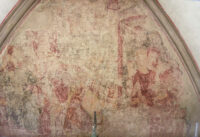 Murals on the south transept of Augsburg Cathedral have been newly dated to around 1000 A.D., making them the oldest known paintings in a cathedral north of the Alps.
Murals on the south transept of Augsburg Cathedral have been newly dated to around 1000 A.D., making them the oldest known paintings in a cathedral north of the Alps.
The murals depicting scenes from the life of John the Baptist were painted on the south transept at the time of the construction of the Romanesque church (completed 1065). They were whitewashed during the iconoclastic fervor of the Protestant Reformation centuries ago and their existence was forgotten until they were rediscovered when the whitewash was removed during renovations in the 1930s. Further elements were revealed during renovations in the 1980s. The murals had suffered extensive paint loss and nobody realized at the time of the rediscoveries their age and significance.
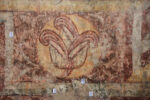 The first inkling of their great age came after structural repairs to the roof in 2009 exposed wall paintings that could only date to the original construction of the cathedral. Similarities in style between the construction period paint and the south transept murals suggested the faded murals may be far older than anyone realized.
The first inkling of their great age came after structural repairs to the roof in 2009 exposed wall paintings that could only date to the original construction of the cathedral. Similarities in style between the construction period paint and the south transept murals suggested the faded murals may be far older than anyone realized.
In fact, they are older than the anyone realized the church was.
Dendrochronological tests revealed that wood in the masonry dated from AD1000, contradicting the previously held dating of the cathedral to around AD1065. The new dating “fits with what we know about a massive destruction in 994,” says Birgit Neuhäuser, a spokeswoman for the Bavarian State Office for Heritage Protection.
“The oldest frescoes are the first layer above the masonry, and are therefore part of the original decor of the church,” Neuhäuser says. “We can assume that in the case of an important Episcopal church, the frescoes would have been painted soon after the construction, so soon after AD1000.”
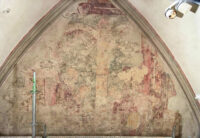 A team of restorers and researchers from the Bavarian State Office for the Preservation of Historical Buildings has spent months studying, cleaning and conserving the murals for the first time. They have been able to identify two scenes and the remains of a third despite the extensive paint loss. The scene on the east wall depicts the beheading of John the Baptist. Herod sits on the throne in the upper part of the panel while two disciples mourn the execution of the Baptist. The west wall mural depicts the entombment. The third scene was on the south wall but was destroyed in the 14th century when a Gothic window was constructed. Researchers believe it was probably the birth and naming of John the Baptist.
A team of restorers and researchers from the Bavarian State Office for the Preservation of Historical Buildings has spent months studying, cleaning and conserving the murals for the first time. They have been able to identify two scenes and the remains of a third despite the extensive paint loss. The scene on the east wall depicts the beheading of John the Baptist. Herod sits on the throne in the upper part of the panel while two disciples mourn the execution of the Baptist. The west wall mural depicts the entombment. The third scene was on the south wall but was destroyed in the 14th century when a Gothic window was constructed. Researchers believe it was probably the birth and naming of John the Baptist.
Given the height of the frescoes in the church, there is no need for special conservation measures in the long term, according to Neuhäuser. “They are not under any particular stress” from the humidity or heat generated by visitors’ traffic, she says. “After cleaning and conservation, they are in a stable and sustainable condition.”
The team plans to examine the roof area and the northern transept of the church for further fresco remnants.
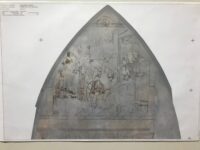
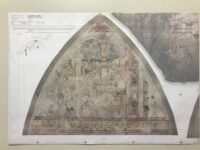
The town of Augsburg was under the Roman occupation referred to as ‘Augusta Vindelicorum’ (cf. ‘Vindelici’ people) and it had been originally a ‘castrum’ from around 15BC. Almost certainly there were earlier churches, but a (re)-Christianization was initialized during the Frankish expansion with the Hiberno-Scottish and Anglo-Saxon mission.
The term ‘Bavaria Slavica’ denotes the areas once populated by West Slavic people in Northeastern Bavaria, and in 793AD the construction of 14 Carolingian churches was ordered, of which some actually survived. As far as the “cathedrals” are concerned, many of the existing ones had been –more or less completely– rebuilt in the 12th century Gothic fashion.
The cathedral in Aachen completely integrated the ‘octagon’ erected as the chapel of the Palace of Aachen between 796 and 805AD, so its entire structure survived. Its murals, however, are all younger. The French apparently removed parts of it in the 18th, until the whole thing was finally repaired in the 19th century.
:hattip: